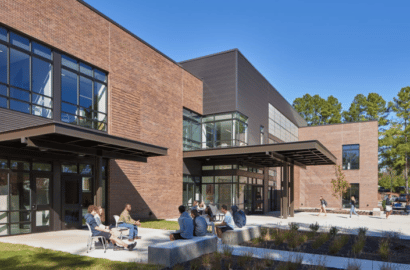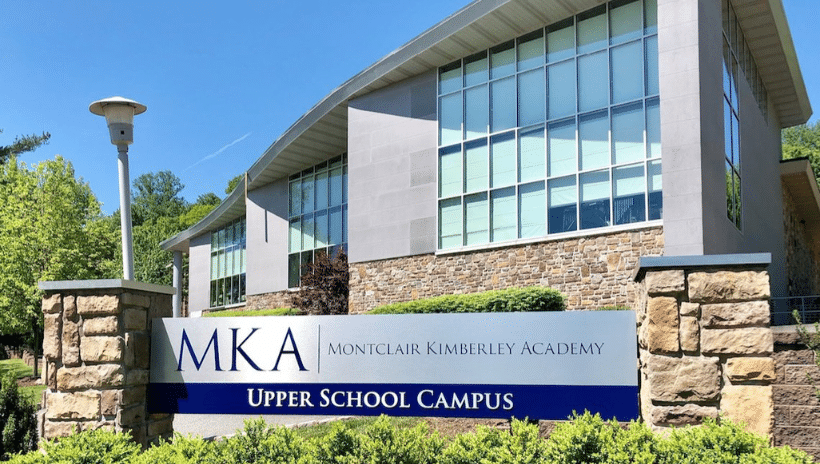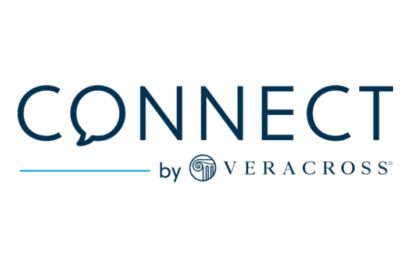
Montclair Kimberley Academy (MKA) is a Pre-K through grade 12 independent day school located in Montclair, New Jersey. They implemented Veracross in 2020 beginning with the SIS, LMS, admission, and accounting solutions. Read this case study for a behind-the-scenes look at how they navigated an SIS implementation to success.
Establish Roles and Responsibilities
As the Director of Technology, Bill Stites spearheaded the search for a new student information system. He owned the project from a technical stance and collaborated both internally and externally to keep things moving forward. Stites knew that internal buy-in would be critical for a smooth implementation. He used a RACI chart, or a Responsibility Assignment Matrix, to establish roles and responsibilities for school staff.
This project management tool identifies which stakeholders are Responsible, Accountable, Consulted, or Informed along different project phases. It sets expectations for who is doing what, eliminates an ongoing feedback loop, and solves the “too many cooks in the kitchen” conundrum. At MKA, Stites asked stakeholders to self-identify where they wanted to be held responsible, accountable, consulted, or informed. This information was referenced throughout the SIS implementation to ensure everyone was involved according to their level of need or desire.
“What’s great about this tool is then there’s accountability to it,” says Stites. “You said you want to be involved, or you said you didn’t, which is fine… but we’re all just clear on what your specific role is. It’s [also] a really good tool for those squeaky wheels or those [who] are resistant. Take the approach of saying, how do you see yourself in this project? Do you want to be more than informed? Consulted? Do you want responsibility?”
Find an Executive Sponsor
Another way to garner internal buy-in is to find an advocate, or “executive sponsor.” This is someone who is a senior leader at your school and can use their authority to champion your cause and create conditions for success.
At MKA, this was the Head of School. He attended kickoff meetings (like the RACI discussion) to lay the groundwork for the SIS project and convey the importance of the initiative for the school as a whole. Throughout the project, he was able to bridge the gap between Stites and senior leadership to identify roadblocks or rally support when needed.
“He was able to speak first about the school’s commitment and his commitment to the support of that project moving forward and what we were going to be asking,” says Stites. “We needed to adjust as a school to meet these deadlines, and people were going to need to be flexible. Having that made all the difference in the world.”
Clear Communication with Stakeholders
Communication is essential for any school-wide initiative, especially a large-scale SIS implementation. Stites focused his communication in three different areas: with the vendor, with parents and students, and with school staff.
Vendor Communication
After selecting Veracross as their new SIS provider, MKA was proactive about communicating their needs and assumptions to the Veracross implementation team. This ensured that both the school and software provider were on the same page and eliminated any surprises in the process.
Additionally, Stites was clear about voicing concerns early on. “Make sure they know where you’re having problems as you’re moving forward. If they’re asking for something and you’re struggling to get it, or if you’ve got questions… let them know what’s going on so that they can provide you with better ways of dealing with the issue.”
Family Communication
Strong communication is also important for keeping your family community informed and engaged. MKA relied on their email newsletters to share the news about their SIS transition. They shared basic information like timeline expectations and also made sure to outline the key benefits of their new SIS for parents and students. This helped ease the pain of learning a new software system and reinforced the positive aspects of the change.
Leading up to the launch, they created walk-through videos to help families get acclimated to the new system and cut down on confusion. Stites also worked closely with the Parents’ Association to share updates at PTA meetings and field questions.
Faculty and Staff Communication
For internal teams, Stites approached communication as a way to inform, educate, and recognize. He made a bullet list of key information to share with faculty and staff. This information was included in a “Veracross Guidebook for Faculty” that Stites then developed to arm his team for the upcoming launch.
“Frame it as professional development,” says Stites. “Let people know where they’re going to go, what they’re going to need, and who they can contact for support because whenever you make a transition like this, the anxiety level ratchets up.”
Stites tied everything back to the RACI chart. He sent progress updates outlining who did what and thanked everyone for their contributions. “It’s not just happening magically,” says Stites. “Identifying and giving shout outs to those people [who] were really providing what was needed so that we could advance and get this launched in a timely manner.”
Advice for Your SIS Implementation
These three factors helped MKA move from old to new SIS with ease — even when their implementation plan was impacted by the onset of COVID-19. Reflecting on the process, Stites shares his advice for schools in a similar position:
Keep it simple. Moving to a new SIS is complicated enough! Don’t add extra stress by asking staff to learn a new project management tool or complicated workflow. “When you’re trying to bring people on to something like this [who] may not have that level of experience, the ability to keep things simple is going to be your best friend,” says Stites.
Survey your community. Be open to feedback before, during, and after the SIS implementation process. “There might be someone who’s bearing the brunt of the implementation and you never hear it because they’re the silent sufferers. Surveys can highlight people that may be having a hard time.”
For more advice and perspective on implementing a new SIS, watch this on-demand webinar to hear how MKA and The Mount Vernon School partnered with Veracross for a successful transition.



